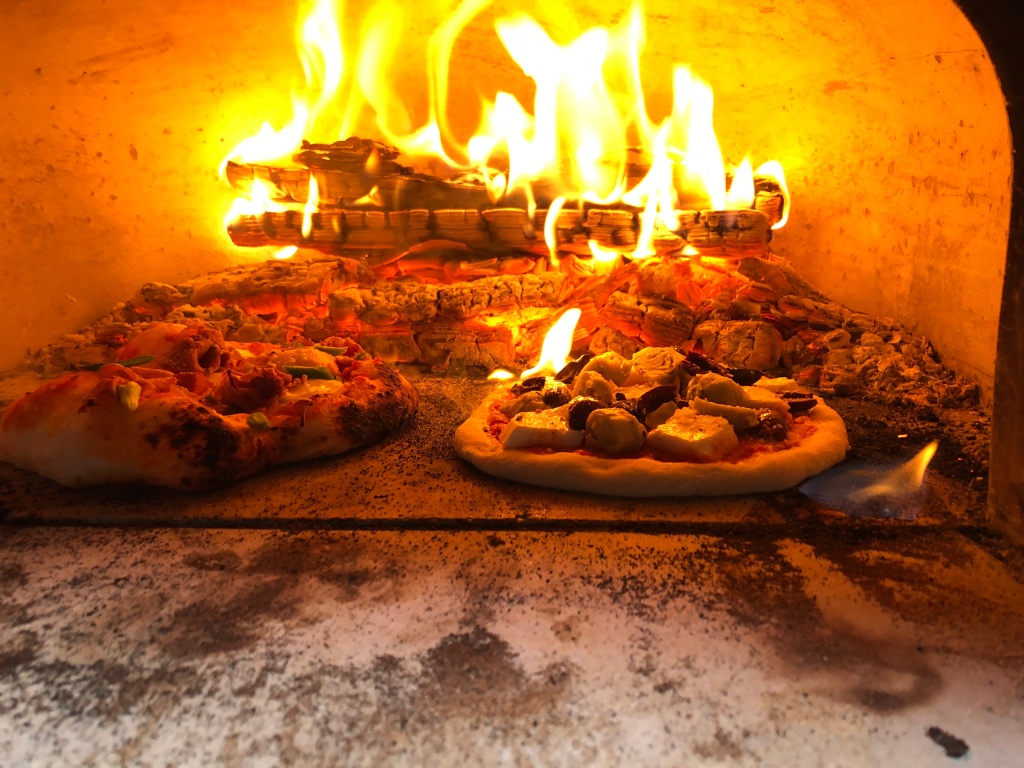
Most of us tend to gravitate to what we can control. We have an innate desire to do what we’re good at and avoid what we are not. It is the fact of control that differentiates comfort from a lack thereof. We invest the time and the energy in a process of skill development, and of knowledge building for some very specific reasons: we want to be good at what we do, we want to be respected, we need others to depend on us, and we have a real desire to be comfortable in our own shoes. Being uncomfortable is un-nerving; it makes our palms sweat, our stomachs churn, our mind wander, and others around us lack the necessary trust in our outcomes.
So, as cooks we focus on the processes, the systems, the equipment, and the recipes that allow us to be in control. Sauté cooks know that a burner can be controlled by the right mix of oxygen and gas, or the thermostat on an electric range. The fry cook can rely, to a large degree, on the thermostat that controls the temp on a deep pan of high temperature oil, and as long as the oil is cleaned and skimmed and changed every few days, they can depend on the results. The banquet cook can set temperature, time, and moisture in a slow cook oven to ensure that a roast is cooked to the proper degree of doneness every time. But then there is the grill station – the place where fire controls everything and the cook is subservient to its inconsistencies.
Fire feeds on oxygen and the dripping of collagen fat melting through the marbling of steaks and chops. Fire, even in the most sophisticated equipment has the upper hand and for a cook to manage it he or she must respect the power that exists in the blue, orange, red and white variances in the character of the flame. The heat varies, the sizzle from contact with fire varies, and the ability to coax the fire into doing what you want is as challenging as hitting a golf ball into 30 mile per hour wind gusts and expecting it to do what you want. A good cook must respect these facts and work every day to try and understand the complex nature of open fire preparations.
Humankinds first attempt at cooking dates back two million years ago according to anthropologist Richard Wrangham, as early cooks built open fire pits to make food more palatable. Some believe that it was this act of cooking meat that allowed the human brain to evolve through the provision of added surplus energy. See “Catching Fire – How Cooking Made Us Human”. https://www.amazon.com/Catching-Fire-Cooking-Made-Human/dp/0465020410/ref=sr_1_1?crid=1N7SLKW94L4NK&dchild=1&keywords=catching+fire+richard+wrangham&qid=1633958900&s=books&sprefix=Catching+Fire+%2Caps%2C183&sr=1-1
Today, the vast majority of the nearly 8 billion people around the world still cook with open fire. Although most may use available wood, twigs, and brush for their fires – in America we were attracted to a new method of fire starting and tending, with the invention of charcoal briquets. It was actually Thomas Edison and Edward Kingsford who perfected the process of pressing sawdust, wood scraps, tar and cornstarch into the magical fuel that many still use today. Kingsford perfected the chemistry and Edison designed the plant for manufacturing. Combining this invention with the work of the Weber Brothers Metal Works in the Chicago area drove the creation of a new industry and a great American pastime. (National Geographic – A Brief History of Cooking with Fire) https://www.nationalgeographic.com/culture/article/a-brief-history-of-cooking-with-fire
Today’s chefs have reinvigorated the ancient process of cooking with open fire. With more sophisticated wood fired grills and ovens, they are opening “Live Fire” restaurants from coast to coast. The comfort of being in control of the process is steadily being replaced by the art of embracing the unpredictability of fire along with the flavor benefits that are a result. Learning to cook in this manner involves a willingness to put aside what a chef thinks he or she knows and be willing to re-learn how to turn over much of the control to the flame. The cook must be willing to tag along for the ride and learn something new every time the coals are stoked.
Starting the fire, selecting the right wood, curing an oven, building the coals, monitoring temperatures that can reach 1,000-degree Fahrenheit, and staying focused on the product that may cook in a few short minutes is far less a science and much more an art form that takes considerable time to understand and begin to master.
The heat is intense, the sweat will pour down a cook’s back, the view of the flames is intoxicating, the sear is breathtaking, and determining degrees of doneness is completely different than working with traditional char broilers and ovens. Neapolitan pizzas take 90 seconds on an 850-degree wood fired hearth, artisan breads bake at 500 degrees, chickens and game birds’ nest in cast iron Dutch ovens as they absorb the flavor of hardwoods like cherry or oak, and steaks and chops take their direction from the deep blue and golden yellow flames that jump from the embers that sit just a few inches from the steel grates designed to take the heat.

If you felt that being a line cook was physically hard before – hang on to your hat when you first enter the world of open fire cooking. This is how cooking was meant to be – a challenge, a way to pit the intelligence of the cook against the all-consuming power and unpredictable nature of fire.
“The comforts of life’s essentials – food, fire, and friendship.”
-Julia Child
PLAN BETTER – TRAIN HARDER
Harvest America Ventures, LLC
Restaurant Consulting
www.harvestamericacues.com – BLOG
CAFÉ Talks Podcast

Leave a comment